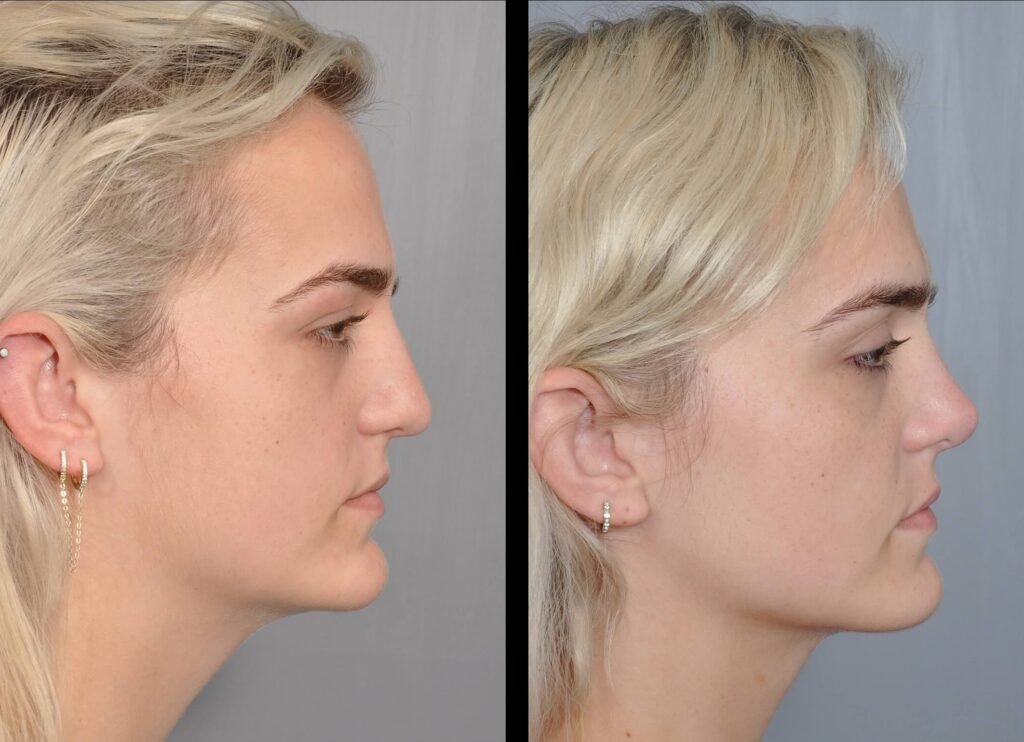Chin implant surgery, also known as genioplasty or chin augmentation, is a popular cosmetic procedure designed to enhance the projection and definition of the chin. Whether you’re seeking improved facial balance, a stronger jawline, or correction of a recessed chin, knowing what to expect before, during, and after surgery can make a big difference in your comfort and confidence.
This step-by-step guide walks you through the entire chin implant journey—from your initial consultation to recovery—so you can feel fully prepared every step of the way.
🗓 Step 1: The Initial Consultation
What to Expect:
- A thorough facial evaluation by a board-certified facial plastic surgeon
- Discussion of your goals and expectations
- A review of medical history, medications, allergies, and past surgeries
- Explanation of implant types, shapes, and sizes
- Digital imaging or morphing tools may be used to simulate your results
Your Role:
- Be honest about your expectations and concerns
- Ask questions (e.g., risks, recovery time, cost, implant material)
- Review before-and-after photos of past patients
📋 Step 2: Pre-Operative Planning
Once you decide to move forward, you’ll receive pre-surgery instructions. This includes:
- Medical clearance or lab work, if required
- Stopping certain medications or supplements (especially blood thinners)
- Smoking cessation at least 2–4 weeks before surgery
- Arranging for a caregiver to drive you home and stay with you post-op
- Instructions on fasting before the procedure
You may also discuss whether any additional procedures (e.g., neck liposuction, rhinoplasty) will be performed alongside your chin implant for better facial harmony.
🏥 Step 3: Day of Surgery
Setting:
- Usually performed as an outpatient procedure
- Done in a certified surgical center or hospital
Anesthesia:
- Typically done under general anesthesia or IV sedation with local anesthesia, depending on the surgeon’s preference and case complexity
Procedure Time:
- Approximately 30 to 60 minutes
The Surgical Process:
- Sterile prep of the lower face and neck
- A small incision is made—either inside the mouth (intraoral approach) or under the chin (submental approach)
- The surgeon creates a pocket along the chin bone
- The custom-selected implant is inserted and precisely positioned
- The implant is secured, often without the need for screws
- The incision is closed with sutures
- A light compression dressing may be applied
🛌 Step 4: Recovery and Aftercare
Immediate Post-Op:
- You’ll be monitored briefly in recovery and discharged the same day
- Expect mild swelling, bruising, tightness, or numbness
- Pain is generally mild and managed with prescribed medications
First Week:
- Stick to soft foods, especially if the incision was made inside the mouth
- Sleep with your head elevated to reduce swelling
- Avoid strenuous activity, bending, or lifting
- Follow wound care instructions and attend your follow-up appointment
1–2 Weeks Post-Surgery:
- Most patients can return to work and social activities
- Swelling continues to subside
- Sutures (if external) are usually removed within 5–7 days
💡 Step 5: Final Results and Long-Term Care
When to Expect Final Results:
- While initial improvements are visible within a week or two, final results emerge after 6–12 weeks as swelling completely resolves
Long-Term Benefits:
- Improved chin projection and facial balance
- Boost in self-confidence and profile aesthetics
- The implant is designed to be permanent and durable
Important Note:
- Regular follow-ups ensure proper healing
- Implants are biocompatible and rarely require replacement unless there’s trauma, infection, or dissatisfaction
Potential Risks to Be Aware Of
While chin implant surgery is generally safe, be sure to understand potential complications, including:
- Infection
- Implant shifting or asymmetry
- Nerve damage or numbness
- Scarring (especially with external incisions)
- Dissatisfaction with results (revision surgery may be needed)
Choosing an experienced, board-certified surgeon significantly reduces these risks.
Final Thoughts
Chin implant surgery can deliver striking, natural-looking enhancements to your facial profile—especially when planned carefully and executed by a skilled professional. Understanding the step-by-step process helps set realistic expectations and ensures you’re fully informed from consultation to recovery.




